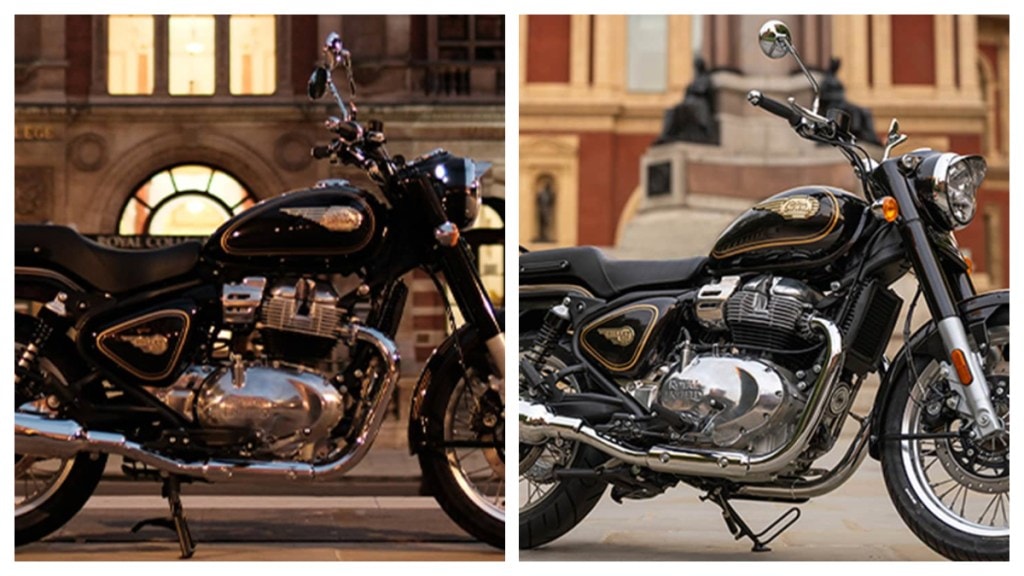On Friday, Royal Enfield unveiled the new Bullet 650 – a far more powerful variant of the existing Bullet 350.
Over the past few decades, the Bullet – a cultural icon embedded in India’s automotive psyche – has seen many mechanical changes, but has always been synonymous with the 350-cc engine. These changes include the ‘Iron Barrel’ era during the 1990s (this engine featured an all-cast iron construction for the cylinder and cylinder head); and then the AVL era in the 2000s, when a modernised, lean burn engine tuned by Austrian company AVL was introduced. The engine construction incorporated aluminium parts for the cylinder head, making it lighter, more fuel efficiency, and cleaner on emissions.
The biggest change was the UCE (Unit Construction Engine) a few years later – engine and gearbox were cast as a single unit, improving reliability and reduced oil leaks. It was the time when electric start became standard alongside the kickstart. Shortly afterwards, the J-Series engine was introduced (a UCE design, but with significant internal updates).
But the size remained the same, until Friday.
The new 650-cc engine
As India’s infrastructure modernises with new highways and higher vehicle speeds, the Bullet needed more muscle, which wasn’t possible with the 350-cc engine.
Enter the Bullet 650, a motorcycle designed to bridge the gap between a century-old heritage and a new India.
The differences
The Bullet 350 is powerful, but starts to feel stressed at speeds above 90-100 km/h. The Bullet 650 gets Royal Enfield’s acclaimed 648-cc parallel-twin engine. Horsepower has more than doubled, jumping from roughly 20 bhp in the 350 to a healthy 47 bhp in the 650. The 650 twin is also known for its smoothness – it does the duty in the Bear, Super Meteor, Interceptor, Continental GT, among others – and therefore there are almost zero vibrations associated with the single-cylinder thump at cruising speeds.
The design
There isn’t much change in the design – and that’s important. The teardrop fuel tank with its hand-painted Madras pinstripes, the iconic ‘casquette’ headlight housing integrating the pilot lamps and dials, and the signature flat bench seat with triangular side boxes remain.
And yet the increased muscle cannot be hidden. At a casual glance, the 650 is unmistakably a Bullet, but a closer look reveals significant changes – such as twin exhaust pipes running down both sides, and the engine filling up the engine cavity or bay. Overall, the 650 looks denser and heavier.
In short, if the 350 looks like a pumped-up Steve Rogers, the 650 is Captain America.
Why the need?
It addressed the loyalists who adore the timeless silhouette and upright posture of the Bullet, but want more performance and don’t want to shift to the sportier Continental GT or Bear and others. The Bullet 650 retains the soul of the past, but has the muscle to conquer the future. Its price will be announced soon, and deliveries shortly afterwards.



















